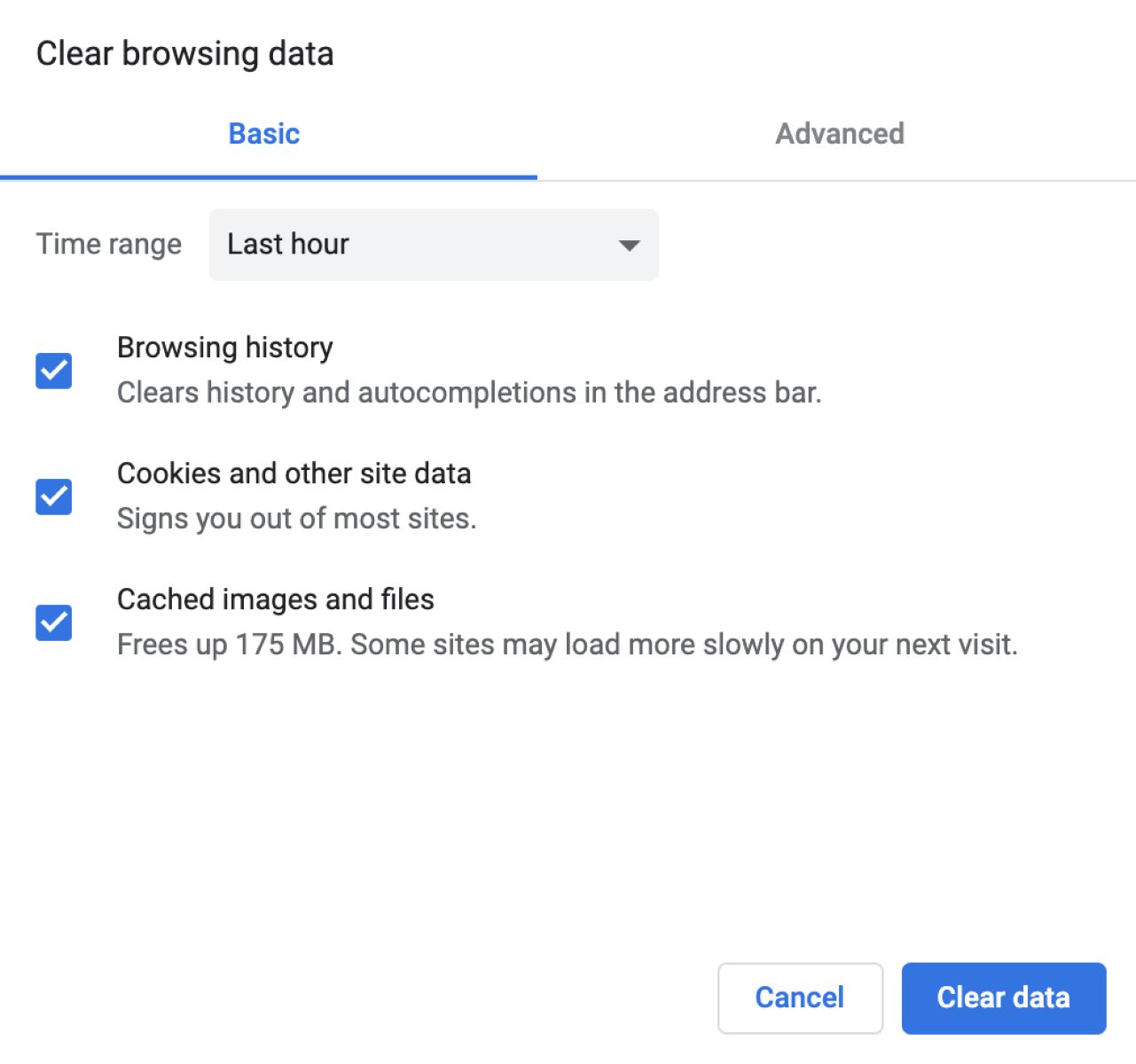Introduction
In the fast-paced digital realm, web browsers have become our gateway to the boundless expanse of the internet. Whether you're fervently researching a topic, streaming your favorite show, or engaging in online shopping, the browser is your faithful companion, faithfully rendering web pages at your beck and call. However, there are times when the browser's cache and stored data can lead to a less-than-optimal browsing experience. This is where the concept of hard refreshing comes into play.
When you encounter a webpage that seems stuck in a rut, displaying outdated content, or failing to load elements properly, a hard refresh can work wonders. It's akin to hitting the reset button, allowing the browser to fetch the latest version of the webpage and start afresh. This simple yet powerful maneuver can breathe new life into your browsing session, ensuring that you're always presented with the most current and accurate content.
In this article, we'll delve into the intricacies of hard refreshing, exploring its significance and the scenarios in which it proves indispensable. Furthermore, we'll equip you with the knowledge to perform a hard refresh across various popular browsers, empowering you to take control of your browsing experience and bid adieu to pesky caching issues. So, buckle up as we embark on a journey to unravel the mysteries of hard refreshing and unleash the full potential of your web browsing escapades.
What is a hard refresh?
A hard refresh, also known as a force refresh or a cache clear, is a fundamental maneuver that enables users to reload a web page while bypassing the browser's cache. When you access a website, your browser stores certain elements of that page, such as images, scripts, and stylesheets, in its cache. This caching mechanism is designed to enhance browsing speed and performance by retrieving these elements from the local storage instead of downloading them anew each time you visit the same page.
However, this efficient process can sometimes lead to discrepancies between the cached content and the actual state of the webpage. This misalignment becomes apparent when you encounter issues such as outdated content, broken layouts, or unresponsive scripts. Here's where the hard refresh comes to the rescue.
By performing a hard refresh, you essentially instruct the browser to disregard the locally stored cache and fetch all the page elements from the web server. This ensures that you are presented with the most recent version of the webpage, devoid of any lingering artifacts from previous visits. In essence, a hard refresh serves as a potent antidote to the staleness that can afflict web pages, breathing new life into your browsing experience.
The process of hard refreshing varies across different browsers and operating systems, but the underlying principle remains consistent. It's a simple yet invaluable technique that empowers users to take control of their browsing environment, ensuring that they always interact with the freshest and most accurate content available.
In the next section, we'll delve into the compelling reasons why hard refreshing your browser is a crucial skill to have in your digital arsenal. So, buckle up as we unravel the mysteries of hard refreshing and equip you with the knowledge to navigate the ever-evolving landscape of the internet with confidence and finesse.
Why do you need to hard refresh your browser?
The need to hard refresh your browser arises from the inherent complexities of web browsing, where the seamless interaction between web pages and the browser's cache can sometimes lead to discrepancies and suboptimal user experiences. Here are several compelling reasons why mastering the art of hard refreshing is essential for every avid internet navigator:
1. Ensuring Accurate Content Delivery
When you revisit a webpage, your browser may display the cached version of the content, potentially leading to outdated information being presented. This can be particularly problematic when browsing dynamic websites that frequently update their content, such as news portals, social media platforms, and e-commerce sites. By performing a hard refresh, you can bypass the cached data and ensure that you are accessing the most current and accurate content available.
2. Resolving Display and Layout Issues
Web pages often rely on a multitude of resources, including images, scripts, and stylesheets, to render their content effectively. In some instances, changes made to these resources may not be reflected due to the browser's reliance on cached data. This can result in broken layouts, missing images, or unresponsive scripts. A hard refresh circumvents these issues by fetching the latest versions of these resources from the web server, thereby rectifying display and layout anomalies.
3. Troubleshooting Script and Functionality Problems
JavaScript and other client-side scripts play a pivotal role in enhancing the interactivity and functionality of modern web applications. However, when these scripts are updated or modified, the browser's cache may retain the previous versions, leading to script errors or dysfunctional features. Performing a hard refresh ensures that the latest script versions are fetched, mitigating potential compatibility and functionality issues.
4. Testing Website Changes
For web developers and designers, hard refreshing is an indispensable tool for testing website changes in real-time. By bypassing the cache, developers can verify the immediate impact of their modifications, ensuring that the updated content, styles, and scripts are accurately reflected without the interference of cached data.
5. Addressing Browser Compatibility Concerns
In some cases, users may encounter compatibility issues with certain websites or web applications due to discrepancies between the cached content and the latest updates. Hard refreshing the browser can help alleviate these compatibility concerns by ensuring that the most recent versions of web assets are retrieved, potentially resolving compatibility issues with older cached data.
In essence, the ability to hard refresh your browser empowers you to maintain a harmonious and up-to-date browsing experience, free from the constraints of outdated cached content. By understanding the significance of hard refreshing and its multifaceted benefits, you can navigate the digital landscape with confidence, knowing that you have the tools to overcome caching-related hurdles and access the freshest web content available.
How to hard refresh on different browsers
Performing a hard refresh on various web browsers is a straightforward yet essential skill that can alleviate caching-related issues and ensure that you access the most current web content. The process of hard refreshing differs slightly across different browsers and operating systems, reflecting the nuanced approaches adopted by each platform. Below, we'll explore the specific steps to hard refresh on popular web browsers, empowering you to seamlessly execute this vital maneuver and rejuvenate your browsing experience.
Google Chrome
- Windows/Linux: Press
Ctrl + F5to perform a hard refresh. - Mac: Press
Cmd + Shift + Rto reload the page and bypass the cache.
Mozilla Firefox
- Windows/Linux: Press
Ctrl + F5orCtrl + Shift + Rto initiate a hard refresh. - Mac: Use
Cmd + Shift + Rto perform a hard refresh and reload the page without cached content.
Safari
- Mac: Press
Cmd + Option + Eto clear the cache and perform a hard refresh simultaneously.
Microsoft Edge
- Windows: Press
Ctrl + F5to hard refresh the page and fetch the latest content.
Opera
- Windows/Linux: Use
Ctrl + F5to perform a hard refresh and reload the page without cached data. - Mac: Press
Cmd + Alt + Eto clear the cache and initiate a hard refresh.
Internet Explorer
- Press
Ctrl + F5to perform a hard refresh and reload the page, bypassing the cache.
By familiarizing yourself with these browser-specific hard refresh shortcuts, you can effortlessly overcome caching discrepancies and ensure that you interact with the most recent versions of web content. Whether you're troubleshooting display issues, testing website changes, or seeking to access the latest updates on dynamic web pages, the ability to hard refresh your browser empowers you to maintain a seamless and up-to-date browsing experience across diverse platforms.
Incorporating these hard refresh techniques into your browsing repertoire equips you with the agility to swiftly address caching-related challenges, enabling you to savor the freshest web content without the encumbrances of outdated cached data. With these insights at your disposal, you're poised to navigate the digital realm with confidence, armed with the knowledge to harness the full potential of your favorite web browsers and revel in a consistently refreshed and vibrant browsing experience.
Conclusion
In the ever-evolving landscape of web browsing, the ability to hard refresh your browser emerges as a pivotal skill that empowers users to transcend the limitations imposed by cached data and access the most current and accurate web content. Throughout this journey, we've unraveled the intricacies of hard refreshing, delving into its significance and the myriad scenarios where it proves indispensable. As we draw the curtains on this exploration, it's essential to underscore the transformative impact of mastering the art of hard refreshing and the enduring benefits it bestows upon avid internet navigators.
By embracing the concept of hard refreshing, users can bid adieu to the frustrations of encountering outdated content, broken layouts, and unresponsive scripts. This fundamental maneuver serves as a beacon of rejuvenation, breathing new life into web pages and ensuring that users are presented with the freshest and most accurate content available. Whether you're a casual internet surfer, a diligent researcher, or a seasoned web developer, the ability to hard refresh your browser transcends boundaries, fostering a harmonious and up-to-date browsing experience for all.
Furthermore, the diverse techniques for hard refreshing across popular web browsers underscore the universal relevance of this skill. From Google Chrome and Mozilla Firefox to Safari and Microsoft Edge, the ability to bypass the cache and fetch the latest web content is a unifying thread that empowers users across diverse platforms. This universality underscores the intrinsic value of hard refreshing, positioning it as a cornerstone of efficient and seamless web browsing.
As we part ways, armed with the knowledge to perform a hard refresh on different browsers and a deep understanding of its significance, you're poised to navigate the digital realm with confidence and finesse. The empowerment to overcome caching-related hurdles and access the freshest web content stands as a testament to your prowess as a discerning internet navigator. With these insights at your disposal, you're primed to embark on a journey of unbridled exploration, savoring the dynamic and ever-refreshed tapestry of the internet with unwavering clarity and vitality.
In essence, the art of hard refreshing transcends the realm of mere browser maneuvers; it embodies a spirit of resilience, adaptability, and unwavering pursuit of the latest and most accurate information. As you venture forth into the boundless expanse of the internet, may the ability to hard refresh your browser serve as your steadfast companion, ensuring that you're always at the vanguard of the digital frontier, embracing the freshest web content with open arms and an insatiable thirst for knowledge and discovery.

























